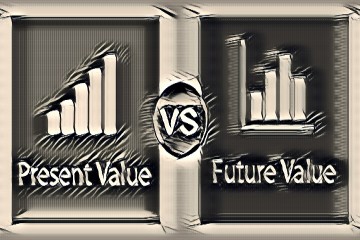Grade 7 Lesson 5: #Presentvalue and #Futurevalue
In the last lesson, we focused on understanding #TimeValue of #Money. In this lesson, we will understand the concepts of #Present #Value and #Future Value.
Future value is the value of your money at some point in the future based on an assumed #growth rate. This growth rate is the rate of return on your investment. To determine the future value of your money (or investment), we will most likely use the #compoundinterest formula below:
Future Value = Investment x (1 + Rate of Interest) ^ Number of Years
Let us understand this with an example: Assume that you have invested $1000 in an investment that gives you 10% interest. To determine how much money you will have in 5 years (i.e. its Future Value), you will use the above formula. The first year of investment earns 10% × $1,000, or $100, in interest. The following year, however, the account total is $1,100 rather than $1,000; so, to calculate compounded interest, the 10% interest rate is applied to the full balance for second-year interest earnings of 10% × $1,100, or $110. At the end of 5 years, the $1,000 invested for five years with a 10% return would have an Future Value (FV) of $1,000 × [(1 + 0.10)5], or $1,610.51.
Now, what if we were to reverse the above i.e. we were told that we would be given $100,000 1 year from now? What would the value of that money be today? This “today’s value” of money paid to us in the future is called Present Value. Present value states that an amount of money today is worth more than the same amount in the future. In other words, present value shows that money received in the future is not worth as much as an equal amount received today.
Let's understand this with an example. If I were to be given $100,000 one year from now, and putting that money in the bank gives me 10%, how much would the value of that money be today i.e. what is its Present Value?
Mathematically, the equation to solve is as follows:
Future Value = Present Value x (1 + Rate of Interest) ^ Number of Years
Note that the above equation is similar to the above Future Value formula, but with “Investment” replaced by “Present Value”. So, if we need to calculate the Present Value using the above equation, it would be:
Present Value = Future Value / ( (1 + Rate of Interest) ^ Number of Years)
Substituting the numbers in our example, we get the following equation:
Present Value = $100,000 / (1 + 10%) = $100,000 / (1 + .1) = $100,000 / 1.1
Present Value = $90,909.09
Net-net, the present value of the $100K one year from now is $90.9K assuming a 10% #return.
Present value (#PV) and Future Value (#FV) are intricately linked. PV is a way of representing the current value of Future Money, based on the principle that money in the present is worth more than money in the future. Present value is used to value the income from #loans, #mortgages, and other assets that may take many years to realize their full value. Smart #investors always use these calculations to determine and compare the value of different investment options and #assets.

ayu ecosystem #kids #education #financialliteracy #finance